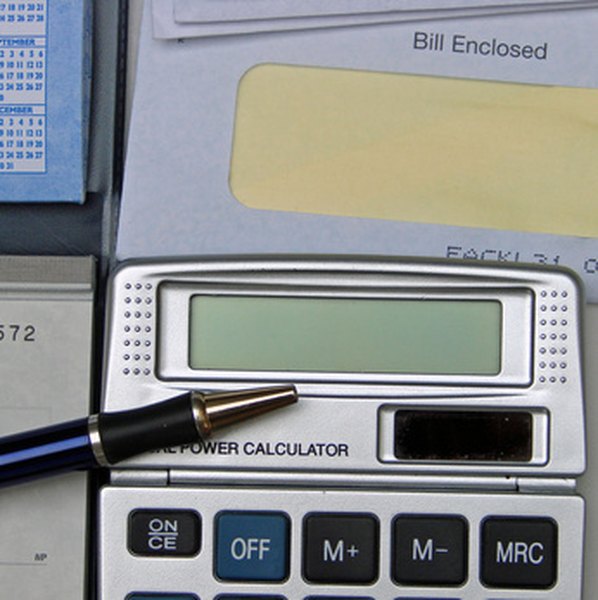What Does It Mean When My Paycheck Says That I'm Exempt From Federal Taxes?
You could owe federal taxes if your employer is not withholding enough from your check.
Paying Bills image by ne_fall_photos from Fotolia.com
If your employer shows you as exempt from federal taxes, it means that he is not withholding tax from your paycheck. Although some employees are exempt, most are not. If you think your employer should be collecting taxes on your earnings, you must talk to your company's payroll department and possibly fill out another Form W-4 to show your new withholding allowances.
Are You Withholding Tax Exempt?
If you had no tax liability in the prior year and you do not expect to owe anything in the current year, you might qualify to be exempt from federal income tax withholding. You can claim exemption if your income is less than $1,050 and you are a dependent on another person's return. But you are not exempt as a dependent if your income is $1,050 or more and if at least $350 of that is from income not related to work, such as dividend or interest income.
If your total income is less than $12,000 as a single person and doesn't include more than $350 in unearned income as a dependent, you can claim exemption. If you are blind or at least 65 years old, you must complete Worksheet 1-1 or 1-2 in Internal Revenue Service Publication 505 to determine whether you are exempt from federal taxes.
Your employer uses Form W-4 to document your personal allowances and, if possible, your exemption from federal taxes. You must complete a Form W-4 when you begin employment for a new employer and any time your information changes. If you're exempt, you need to file every year, as exemptions are only good for one year. File the form by Feb. 15 of the year you're exempt, or your employer will have to start withholding taxes from your paycheck.
Enter your identifying information, such as your name, address and Social Security number, on Form W-4. Do not complete lines 5 and 6 and write "Exempt" in the box on line 7. Sign and date the form and return it to your employer. Your employer will stop withholding federal tax after receiving your completed Form W-4. If your situation changes after submitting the form to your employer so that you will owe tax, you must complete a new W-4 within 10 days showing your allowances and additional withholding, if any, and leaving line 7 blank.
Other Considerations
If you have not filed a W-4 with your employer showing that you are exempt from federal tax withholding, the payroll department might have made an error. Check with your employer or someone in the payroll department as soon as possible to correct the error. Even if your employer made a mistake, you are still responsible for paying the tax on your income. Consider specifying additional withholding on top of your regular withholding on a newly submitted W-4 to prevent a large tax bill when you file your return. Your federal tax exemption does not prevent your employer from withholding Social Security or Medicare taxes from your paycheck. You can get a blank W-4 from your employer or the IRS.
2018 Tax Law Changes
As of 2018, the standard deduction on federal income taxes is rising to $12,000 for single people, $18,000 for people filing as head of household and $24,000 for married couples filing jointly. If you make no more than the standard deduction for your filing status, you may be able to claim exemption from withholding.
Married couples should consider both incomes and the $24,000 figure even if filing separately.
2017 Tax Law
As of 2017, you could only claim exemption from withholding if you made less than $10,400 as a single filer or as someone married and filing separately, $13,400 if filing as a head of household or $20,800 as a married couple filing jointly.
References
Resources
Writer Bio
Specializing in business and finance, Lee Nichols began writing in 2002. Nichols holds a Bachelor of Arts in Web and Graphic Design and a Bachelor of Science in Business Administration from the University of Mississippi.

